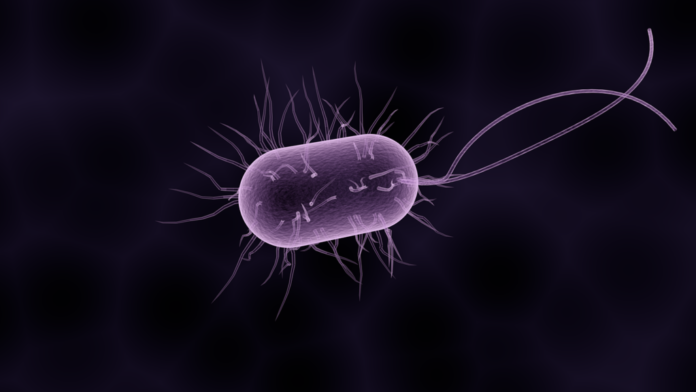Three newly identified sea spider species have unveiled an extraordinary survival strategy: farming methane-oxidizing bacteria directly on their bodies. This remarkable symbiosis, described in a study published in PNAS, challenges our understanding of deep-sea ecology and offers insight into life in the ocean’s darkest, most inhospitable environments.
Discovery of New Deep-Sea Sea Spider Species
A team led by marine biologist Bianca Dal Bó from Occidental College has described three previously unknown species in the genus Sericosura. These marine arthropods—colloquially called sea spiders—were collected from methane seeps off Southern California and Alaska using remotely operated vehicles during dives in 2021, 2023, and earlier expeditions.
While they resemble true spiders with their small bodies and long, jointed legs, sea spiders belong to the class Pycnogonida, a distinct lineage of marine arthropods. Each new Sericosura species was found living exclusively on or near active methane seeps, where methane gas percolates through the seafloor, fueling unique subterranean ecosystems.
The Methane Seep Habitat
The three collection sites span temperatures, depths and geographic regions:
- Palos Verdes Seep (397 m depth) off Southern California
- Del Mar Seep (1,018 m depth) off Southern California
- Sanak Seep (2,020 m depth) off the coast of Alaska
Methane seeps form when methane-rich fluids escape from sub-sea deposits into cold, deep waters. There, specialized microbial communities oxidize methane, producing energy and biomass that underpin entire ecosystems independent of sunlight. These communities typically include free-living bacteria, clams, mussels and worms—but hosting them directly on an animal’s exoskeleton, as these sea spiders do, is unprecedented.
Symbiosis with Methane-Oxidizing Bacteria
Microscopic examination of the Sericosura exoskeletons revealed dense mats of three distinct groups of methane- and methanol-oxidizing bacteria (MMOx), including members of the Methylococcaceae, Methylophilaceae and Methylothermaceae families. These bacteria convert methane or methanol into cellular carbon, releasing energy in the process.
Unlike other seep invertebrates—such as sponges, beard worms and hydrothermal vent crabs—that form a single primary or secondary symbiosis, each new sea spider species harbored all three bacterial groups simultaneously. The arrangement suggests these sea spiders cultivate a miniature “microbial farm” on their bodies, harvesting both the bacteria and their metabolic products as nutrition.
Methodology and Experimental Validation
To confirm the functional role of the epibiotic bacteria, researchers conducted in-situ experiments in Monterey Bay’s research labs:
- Isotope Tracing:
- Sea spiders were exposed to methane and carbon dioxide labeled with stable carbon isotopes (^13C-CH₄ and ^13C-CO₂).
- After five days, spider tissues were analyzed for incorporation of the ^13C label.
- Results:
- Nearly all bacterial cells on the sea spider cuticle assimilated carbon from methane or methanol, but not from CO₂.
- Significant ^13C enrichment was detected in the spider digestive tissues, indicating the spiders consumed their own epibiotic bacteria.
- Microscopy and Genetic Analysis:
- Scanning electron microscopy confirmed the dense mats of MMOx bacteria on the legs and abdomen.
- 16S rRNA gene sequencing identified the three bacterial families, each known for methane or methanol oxidation.
- Egg Microbiome Study:
- Male sea spiders brood fertilized egg sacs for up to 20 days on specialized appendages.
- Even in early developmental stages, the eggs carried the same methane-oxidizing bacteria, suggesting vertical transmission of the microbiome.
Implications for Deep-Sea Ecology
Energy Acquisition in the Abyss
Sunlight never penetrates deeper than about 1,000 m, so organisms beyond that depth cannot rely on photosynthetic food chains. Instead, deep-sea species exploit chemical energy sources like methane or hydrogen sulfide. The newly discovered symbiosis allows sea spiders to remain permanently anchored to methane seeps, cultivating their food source rather than foraging widely.
Niche Specialization and Endemism
All three Sericosura species were found strictly within 25 m of active seep sites. This extreme habitat specificity underscores how specialized deep-sea life can become. Such endemism raises conservation concerns, as disturbance or decline of methane seep habitats could imperil these and other seep-dependent organisms.
Microbial Diversity and Biogeography
Despite the geographic separation between Alaskan and Southern Californian seeps—over 2,000 km apart—the sea spiders’ microbiomes were functionally identical. This finding suggests either a widespread dispersal mechanism for seep-specialist bacteria or strong selective pressure favoring identical symbiont communities on host surfaces.
Broader Significance and Future Research
Evolution of Animal-Microbe Symbioses
Animal farming of bacteria for nutrition is known in a few terrestrial invertebrates—such as leaf-cutting ants and termites—but is rare in marine environments. The Sericosura sea spiders represent the first known case of invertebrate hosts cultivating multiple methane-oxidizing bacterial lineages on their bodies, expanding our understanding of symbiotic evolution.
Biotechnology and Bioremediation
Methane is a potent greenhouse gas. Harnessing MMOx bacteria for methane capture or bioconversion has industrial applications. Studying natural bacterial cultivation on sea spiders could inspire bioengineered systems for methane mitigation or biofuel production.
Conservation of Methane Seep Ecosystems
Methane seeps are biodiversity hotspots with unique, vulnerable communities. Recognizing their ecological importance and fragility is critical for marine conservation. Continued deep-sea exploration and habitat mapping will aid protective measures against deep-sea mining, trawling and climate change impacts.
Questions for Further Study
- Transmission Mechanisms: How exactly do male sea spiders transfer the microbiome to eggs, and can juveniles acquire it anew if lost?
- Host Control: What molecular signals enable sea spiders to selectively cultivate these bacterial families?
- Physiological Adaptations: How do sea spider immune and digestive systems accommodate and process the MMOx bacteria?
- Expanding Geographic Range: Are similar symbioses found in other regions—e.g., cold seeps in the Gulf of Mexico or hydrothermal vents in the Pacific?
Conclusion
The discovery of sea spiders farming methane-eating bacteria on their exoskeletons unveils a novel form of animal-microbe symbiosis and highlights the ingenuity of life in Earth’s deep-sea realms. By maintaining their own microbial gardens, these Sericosura species secure a constant, localized food supply in a sunless world. As researchers probe deeper into the ocean’s abyss, more marvels of adaptation await, reminding us of the vast, largely uncharted diversity that thrives beneath the waves.
READ MORE: NASA’s Arcstone Mission to Revolutionize Earth-Observing Satellite Calibration
